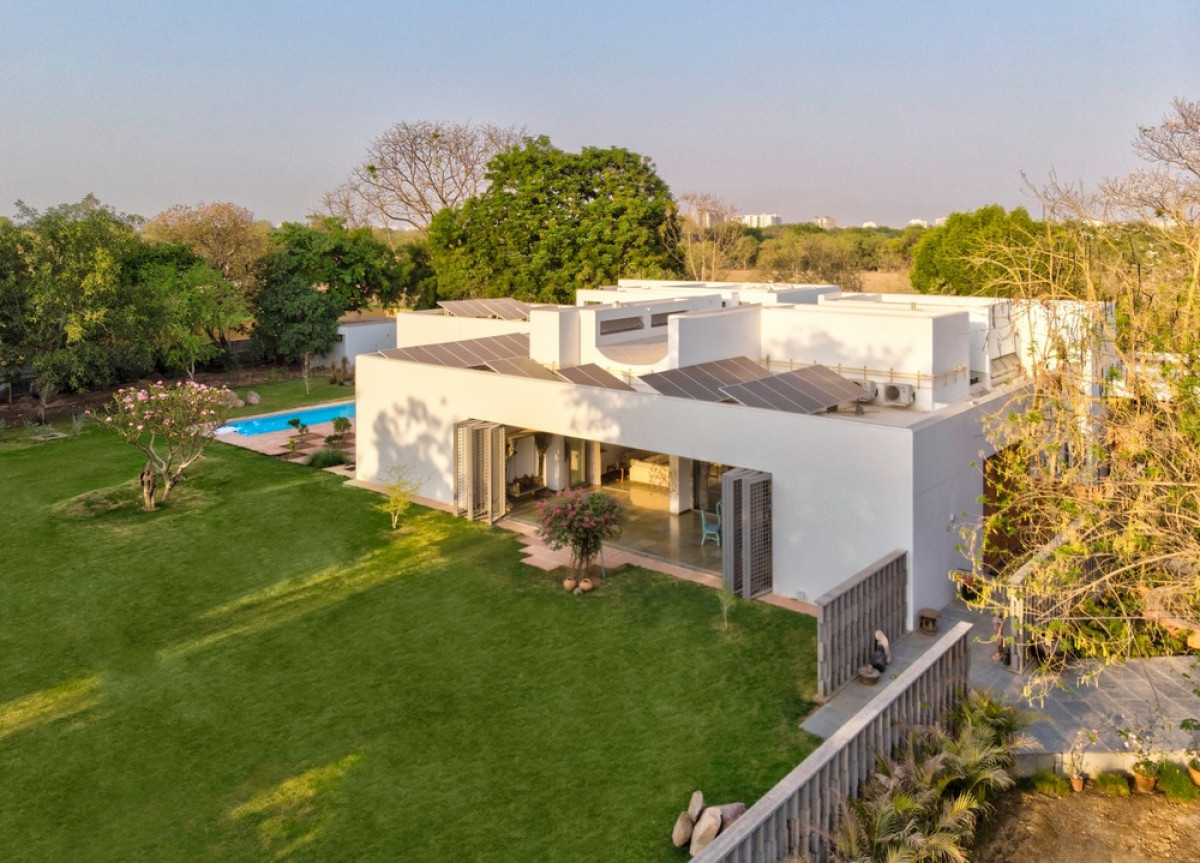
‘Amaltas’ (a regional name for Cassia Fistula), as a rural residential retreat, particularly addresses distinct spatial domesticity by facilitating the requirements of its singular inhabitant i.e. the client herself, as opposed to the typicality of any residential space accommodating a multi-member family household. As a whole, this countryside house functions in accord with the surrounding invitatory landscape, interspersed courtyards, apertures for indirect daylighting and syncretic accents of inherited, artisanal and natural entities. Owing to its site-specific presence, the villa encompasses about 900 sq. m of area, across a 7,000 sq. m plot, on the outskirts of Vadodara City, India.
Also Read: How is the WFH trend changing home furniture and design trends?
It is in the emergence of an ever-changing intersubjectivity between any residential spatiality and its inhabitant/s, that the dynamics of domesticity evolves. This further leads to unfolding an array of conscious design determinants, which are flexible enough to accommodate temporal variances whilst still asserting coherency and user-oriented peculiarity. For an atypical single-user household like Amaltas, the design considerations including but not limited to the assimilation of functionality and aesthetics, extended beyond the conventional schematics of a space that usually resonates interdependency and familial convergence.
Also Read: Working from home? Use these Vastu tips to run a successful business from home!
The resultant spatiality, thus incorporates four disparate zones, interlinked and contiguous alongside multiaxial circulatory connections. The essence of each zone differs distinctly by varying the degree of transparency, scale, natural light, privacy, and layering. This approach also enunciates transitional experiences, transforming the user’s movement into a sequential yet seamless phenomenon.
As for the rural site for this residence, it came with a lush expanse of pre-existent mature trees with some sporadically grown climbers and thickets. Diagrammatically, the design evinces a dispersal from the formal center, with open, semi-open and closed spaces, structured through a series of courtyards which not only moderate the openness of each space but also enable natural ventilation and day-lighting. The volumes and voids formed as a resultant of the superimposition of the tilting grids are marked by the prominence of broad brick walls.
Also Read: Transitioning to working from home
The intent to disseminate the unconventionality of domesticity for this case, propelled the design to establish autonomous functionality, critically to a residential brief. This, in turn, was addressed by dispersing discrete services and circulation for each spatial cluster; be it for the user’s private domain or the residing guests’ wing or rather public areas in the core which can host frequent client meetings and social gatherings.
Also Read: Mind your posture while working from home
While coping with the fluctuating subtropical climatic indicators for a residence of this scale, considerations for passive solar techniques included the clever use of layering wide verandas and service buffers. Thoughtful incorporation of thick load-bearing brick masonry and RC frame structure together allows the plan to deepen and achieve the desired hierarchical succession.